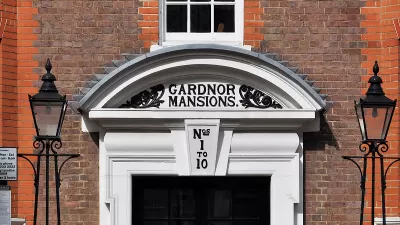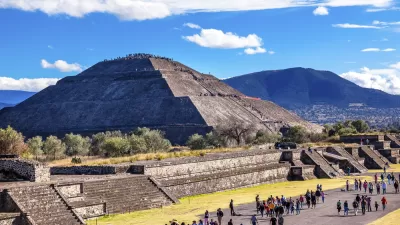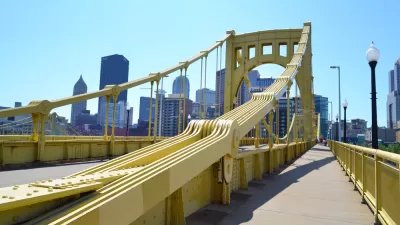Airbnb connects travelers from around the world to unique rentable spaces. With the recent launch of a "Neighborhoods" feature, Airbnb has the potential to redirect tourist spending to often overlooked areas.
While tourists often crave authentic, local experiences from the cities they visit, information about where to go and what to do is often limited to the tried and true destinations. Fast Company writer, Ariel Schwartz laments, "Whenever I happen to be walking near San Francisco's Fisherman's Wharf area--ground zero for tourists--I want to yell at passersby: 'Get out of here! There are so many more vibrant parts of the city that you could be visiting.'"
Airbnb, the website that allows travelers to book spaces on a peer-to-peer platform, has created a unique Neighborhoods feature that highlights the nooks and crannies of popular cities, providing a new way to experience places like San Francisco. Airbnb solicited the input from "neighborhood experts", local street photographers and hired their own cartographer to create comprehensive guides to 300 neighborhoods in 7 cities: New York, Paris, London, San Francisco, Berlin, Washington DC, and Rio de Janeiro.
"Airbnb has some serious economic power," writes Schwartz, "According to a recent study from HR&A Advisors, Airbnb guests in San Francisco stay in their accommodations for an average of 5.5 days and spend approximately $1,045 on transportation, shopping, and food. At the same time, 90% of guests visiting San Francisco (and presumably other cities) prefer to stay in areas that are 'off the beaten track.'"
Neighborhoods businesses that are used to serving locals might see a boost from tourism in the near future.
Thanks to Jessica Brent
FULL STORY: How Airbnb’s New Neighborhoods Feature Can Revive Local Economies

Planetizen Federal Action Tracker
A weekly monitor of how Trump’s orders and actions are impacting planners and planning in America.

Maui's Vacation Rental Debate Turns Ugly
Verbal attacks, misinformation campaigns and fistfights plague a high-stakes debate to convert thousands of vacation rentals into long-term housing.

San Francisco Suspends Traffic Calming Amidst Record Deaths
Citing “a challenging fiscal landscape,” the city will cease the program on the heels of 42 traffic deaths, including 24 pedestrians.

Defunct Pittsburgh Power Plant to Become Residential Tower
A decommissioned steam heat plant will be redeveloped into almost 100 affordable housing units.

Trump Prompts Restructuring of Transportation Research Board in “Unprecedented Overreach”
The TRB has eliminated more than half of its committees including those focused on climate, equity, and cities.

Amtrak Rolls Out New Orleans to Alabama “Mardi Gras” Train
The new service will operate morning and evening departures between Mobile and New Orleans.
Urban Design for Planners 1: Software Tools
This six-course series explores essential urban design concepts using open source software and equips planners with the tools they need to participate fully in the urban design process.
Planning for Universal Design
Learn the tools for implementing Universal Design in planning regulations.
Heyer Gruel & Associates PA
JM Goldson LLC
Custer County Colorado
City of Camden Redevelopment Agency
City of Astoria
Transportation Research & Education Center (TREC) at Portland State University
Jefferson Parish Government
Camden Redevelopment Agency
City of Claremont





























